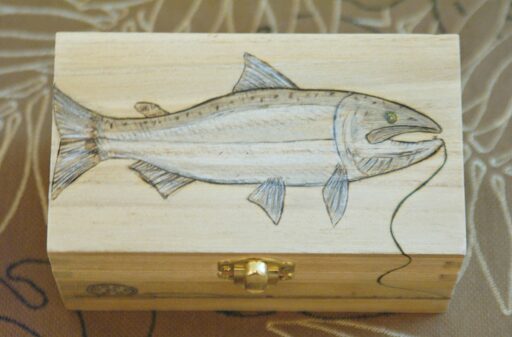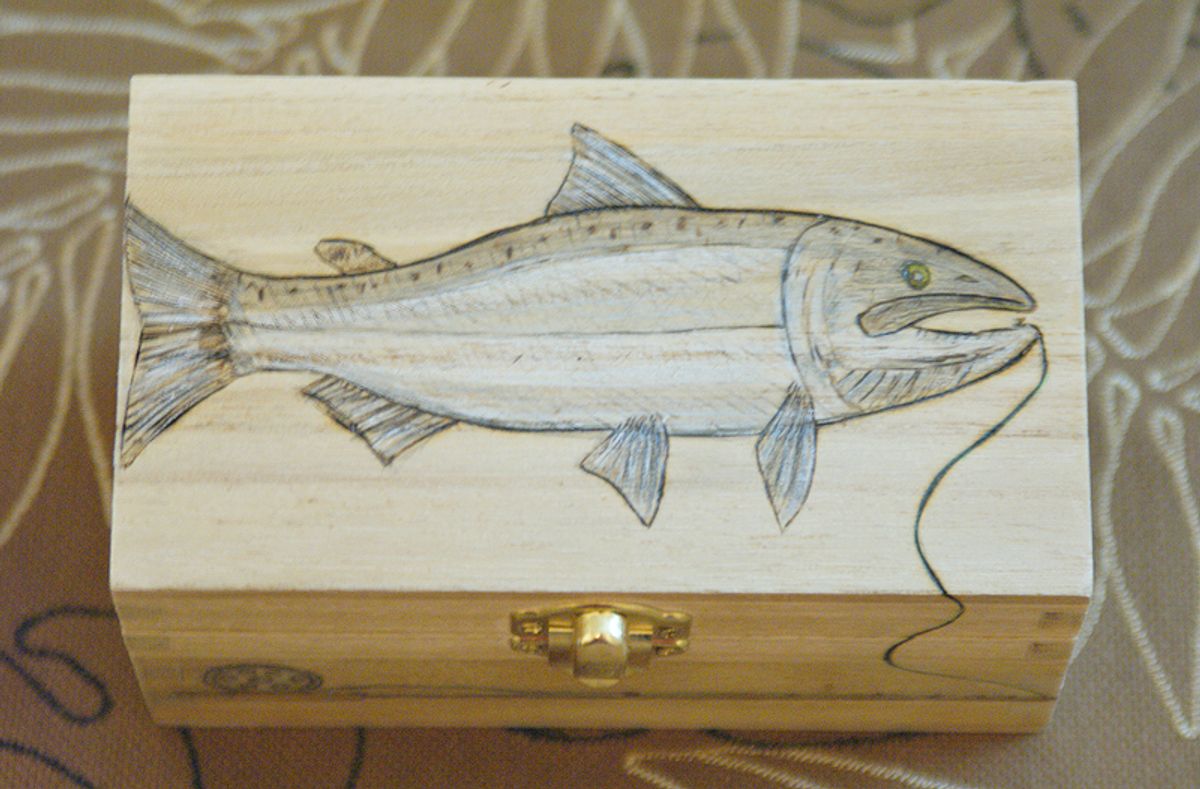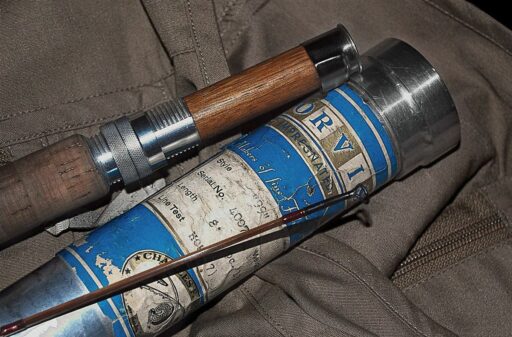The traditional Japanese method of fly-fishing known as Tenkara has garnered a dedicated following among anglers who appreciate the simplicity and elegance of this minimalist approach. Crafting your own Tenkara fly fishing rod at home not only deepens your connection to the art but also allows for a customized fishing experience tailored to your preferences. This article delves into the intricate process of creating a Tenkara rod from selecting materials to the final touches that make the rod uniquely yours.
Key Takeaways
- Understanding the properties of different materials, such as bamboo and modern alternatives, is crucial for designing a Tenkara rod with the desired flexibility and action.
- The crafting process requires a well-organized workspace and a set of specialized tools to shape, join, and align the rod sections accurately.
- Applying finishes like varnish and oils, as well as customizing with wraps and grips, not only protects the rod but also enhances its functionality and aesthetic appeal.
- Properly setting up the Tenkara rod with the appropriate line, tippet, and flies is essential for optimal performance and mastering the unique casting techniques of Tenkara.
- Regular maintenance, including cleaning, storage, and repairing damages, ensures the longevity and reliability of your handmade Tenkara rod.
Understanding Tenkara Rod Materials and Design

Selecting the Right Bamboo
The selection of bamboo is a critical step in crafting a Tenkara rod, as it forms the backbone of your fishing tool. Choose bamboo that is both straight and has a consistent diameter to ensure the integrity of the rod’s action. The ideal bamboo should also possess a balance between flexibility and strength, allowing for precise casting and the absorption of fish strikes.
When evaluating bamboo, consider the following characteristics:
- Age of the bamboo: Mature bamboo is preferable for its durability.
- Color and texture: Look for a uniform color and smooth texture.
- Node spacing: Evenly spaced nodes contribute to the rod’s balance.
Remember, the quality of bamboo not only affects the rod’s performance but also its longevity. Selecting the right bamboo is an investment in your fishing experience.
Finally, it’s important to note that while bamboo is the traditional material for Tenkara rods, modern advancements have introduced alternative materials that offer different benefits. However, for purists and those seeking an authentic experience, bamboo remains the quintessential choice.
Modern Alternatives to Traditional Materials
While the traditional Tenkara rod is crafted from bamboo, modern advancements have introduced a variety of alternative materials that offer durability, flexibility, and ease of use. Carbon fiber has become a popular choice due to its lightweight properties and high tensile strength, allowing for precise casting and sensitivity to fish bites.
Materials such as fiberglass and aluminum are also used, each bringing unique benefits to the rod’s performance. Fiberglass is known for its excellent flexibility, which can be advantageous in certain fishing conditions, while aluminum offers unmatched durability and a distinct feel.
When selecting materials for your Tenkara rod, consider the type of fishing you’ll be doing and the qualities you value most in a rod. Whether it’s the traditional feel of bamboo or the modern touch of carbon fiber, your choice will shape your fishing experience.
Here’s a quick comparison of these materials:
- Bamboo: Traditional, natural feel, excellent flex, but requires more maintenance.
- Carbon Fiber: Lightweight, strong, and low maintenance, preferred for its performance.
- Fiberglass: Great flexibility, good for beginners, often more affordable.
- Aluminum: Extremely durable, heavier, unique tactile feedback.
The Impact of Rod Flexibility and Action
The flexibility and action of a Tenkara rod are crucial to its performance. Rod action refers to how much of the rod flexes during a cast and can significantly affect your control and sensitivity to fish bites. Fast-action rods bend primarily near the tip, offering greater sensitivity and quicker hook sets. In contrast, slow-action rods bend closer to the handle, providing a gentler presentation of the fly.
When selecting a Tenkara rod, consider the type of water you’ll be fishing in and your personal casting style. Fast-action rods are typically better for windy conditions and longer casts, while slow-action rods excel in calm waters with a need for delicate fly placement.
The right balance between rod flexibility and action can enhance your fishing experience, making it easier to cast accurately and feel the slightest tug on your line.
Here’s a simple list of factors to consider when choosing a Tenkara rod:
- Construction: Materials like bamboo, fiberglass, or graphite.
- Versatility: Rod action categories such as fast, moderate, or slow.
- Sensitivity to bites and casting accuracy.
- Compatibility with various fishing conditions and techniques.
The Process of Crafting Your Own Tenkara Rod

Tools and Workspace Setup
Crafting your own Tenkara rod requires a dedicated workspace and a specific set of tools. Ensure your workspace is well-ventilated and organized to facilitate a smooth crafting process. Adequate lighting is crucial for detailed work, and a sturdy workbench will provide a stable platform for your rod-building activities.
Here is a basic list of tools you’ll need to get started:
- Bamboo splitter or saw for cutting rod blanks
- Fine-grit sandpaper for smoothing surfaces
- Tapering tool for shaping the rod
- Measuring tape and calipers for precision
- Epoxy or wood glue for joining sections
- Clamps and binding cord for alignment and setting
Remember, the quality of your tools can greatly influence the final outcome of your rod. Investing in high-quality tools not only makes the process easier but also ensures a more refined finish to your Tenkara rod.
As you embark on this journey, consider the pros and cons of building your own rod. While it allows for a high degree of customization and a unique fishing experience, it also requires patience and attention to detail. Refer to a comprehensive DIY fishing rod guide for materials needed, steps to make bamboo and PVC rods, and tips for choosing the right rod blanks.
Shaping the Rod: Techniques and Tips
Shaping your Tenkara rod is a delicate process that requires attention to detail and a steady hand. Ensure each section tapers smoothly to maintain the rod’s balance and action. Begin by carefully selecting the right tools, such as fine-toothed saws and sandpaper of various grits, to shape the bamboo or alternative materials.
- Start with a rough outline of your rod’s profile.
- Gradually refine the shape using finer tools and sandpaper.
- Check the symmetry and tapering frequently to avoid unevenness.
Consistency is key in rod shaping. A uniform taper not only contributes to the rod’s aesthetic but also to its functionality, affecting the casting accuracy and sensitivity.
Remember, the goal is to achieve a rod that feels like an extension of your arm. It should be comfortable to hold for extended periods and responsive to the subtlest of movements. Patience and practice are your best allies in mastering this craft.
Joining Sections and Ensuring Alignment
Once the individual sections of your Tenkara rod are shaped to perfection, the next critical step is to join them together with precision. Ensuring proper alignment is crucial; even a slight misalignment can affect the rod’s performance and your overall fishing experience. To achieve this, follow a systematic approach:
- Begin by dry-fitting the sections without any adhesive to check for a snug fit.
- Mark the alignment with a pencil or a piece of tape to maintain consistency.
- Apply a strong, waterproof adhesive to the joints, taking care not to over-apply.
- Carefully align the sections according to your marks and press them together.
- Use a set of alignment tools or jigs to hold the sections in place as the adhesive cures.
It’s important to allow ample time for the adhesive to fully cure before testing the rod’s flexibility. This patience will pay off in the durability and quality of your finished Tenkara rod.
After the adhesive has set, double-check the alignment by sighting down the length of the rod. Any necessary adjustments should be made before the adhesive is completely cured. Remember, the goal is to create a rod that feels like a natural extension of your arm, enhancing your fishing techniques like fly fishing and trout fishing.
Finishing Touches for Functionality and Aesthetics

Applying the Finish: Varnish and Oils
The final step in crafting your Tenkara rod is applying a protective finish that will not only enhance the rod’s appearance but also protect it from the elements. Choosing the right varnish or oil is crucial, as it will affect the rod’s durability and feel. A high-quality marine varnish is recommended for its waterproof properties and UV resistance.
When applying the finish, ensure you work in a dust-free environment to avoid imperfections. Use thin coats and sand lightly between layers to achieve a smooth, even finish. Here’s a simple guide to the process:
- Prepare the rod by cleaning it thoroughly.
- Apply the first coat of varnish or oil and let it dry.
- Sand the rod lightly with fine-grit sandpaper.
- Wipe down the rod to remove any dust.
- Apply subsequent coats, allowing ample drying time between each.
Remember, patience is key. Rushing the finishing process can result in a less than satisfactory outcome. Take your time to apply each coat evenly and allow for proper drying, which can vary depending on humidity and temperature.
Once the final coat is dry, your rod will not only look beautiful but will be ready to withstand the rigors of fishing in various conditions. Regular maintenance will ensure the finish remains intact and your rod performs well for years to come.
Customizing with Wraps and Grips
Customizing your Tenkara rod with wraps and grips not only enhances the rod’s functionality but also allows for a personal touch that reflects your style. Choosing the right materials for your wraps and grips is crucial as it affects both comfort and control while fishing.
- Select materials that offer a good balance between grip and durability, such as cork or high-quality synthetic rubbers.
- Consider the texture and thickness of the wrap for a comfortable hold during long fishing sessions.
- Experiment with different colors and patterns to make your rod stand out.
When applying wraps, ensure they are tight and even for a professional finish. Overlapping wraps should be minimal to maintain a smooth surface.
Remember, the grip is your connection to the rod; it’s where you’ll feel the bite and fight the fish. Therefore, take your time to craft a grip that feels right in your hand and enhances your fishing experience. For those seeking guidance, many online resources, including DIY guides, offer step-by-step instructions and creative ideas.
Adding Personal Touches to Your Rod
Once you’ve crafted the structure and ensured the quality of your Tenkara rod, it’s time to add those personal touches that make it uniquely yours. Personalization not only sets your rod apart aesthetically but also enhances the connection between you and your fishing experience.
The final step in rod crafting is an opportunity to express your individuality and fishing style.
Consider engraving your name or a special symbol that resonates with you. You might also choose to add decorative wraps in colors that reflect your personality or pay homage to traditional Tenkara patterns. Here’s a list of ideas to inspire your customization:
- Engraving your initials or a meaningful date
- Selecting thread colors for wraps that match your favorite fishing spots
- Incorporating a unique emblem or family crest
- Using a specific type of wood for the handle that feels right in your hands
Remember, these personal touches not only make your rod more visually appealing but can also improve your grip and comfort during long hours by the water.
Setting Up Your Tenkara Rod for the Water

Choosing the Right Line and Tippet
Selecting the appropriate line and tippet for your handmade Tenkara rod is crucial for an optimal fishing experience. The line’s weight and length should harmonize with the rod’s action and length to ensure proper casting and fly presentation. A mismatch can lead to poor control and an unsatisfying day on the water.
- Monofilament lines are a popular choice for their suppleness and ease of use.
- Fluorocarbon lines offer higher sensitivity and less visibility underwater.
- Tippets, the fine line connecting the fly to the main line, should be chosen based on the target fish species and water clarity.
When considering tippet sizes, remember that smaller diameters offer less visibility to fish but are also more prone to breaking. Balance is key.
It’s also important to consider the conditions under which you’ll be fishing. Clear waters may require finer tippets for stealth, while in turbulent waters, a stronger tippet may be necessary to withstand the rough conditions. Always be prepared to adjust your setup based on the environment and the behavior of the fish.
Attaching Flies and Understanding Patterns
When it comes to attaching flies to your Tenkara rod, precision and care are paramount. Start by selecting the appropriate fly for the conditions—consider water clarity, light levels, and insect activity. A secure knot is essential for attaching your fly; the improved clinch knot is a popular choice among anglers for its reliability and ease of tying.
Understanding fly patterns is crucial for successful Tenkara fishing. Patterns mimic the life stages of aquatic insects, and choosing the right one can make all the difference. Here’s a simple list to help you match the hatch:
- Dry Flies: Imitate adult insects on the water surface.
- Nymphs: Represent sub-surface insect larvae.
- Streamers: Mimic small fish or larger aquatic creatures.
Remember, the goal is to present the fly in a way that mimics natural prey. This often involves casting upstream and allowing the fly to drift down naturally with the current.
Regularly practice and patience are key to mastering these techniques. As you gain experience, you’ll learn to read the water and understand which patterns are most effective under different circumstances.
Casting Techniques Specific to Tenkara
Mastering the art of Tenkara casting is essential for a successful fishing experience. The key to Tenkara casting lies in the delicate balance between precision and fluidity. Unlike Western fly-fishing, Tenkara emphasizes minimalistic and efficient movements, allowing for subtle presentations of the fly.
- Begin with a balanced stance and grip the rod near its balance point.
- Execute the cast with a smooth, whipping motion, using the wrist and forearm.
- Aim to keep the line as straight as possible during the cast to maintain control and accuracy.
Tenkara casting is not just about the motion; it’s about understanding the rhythm of the water and the behavior of the fish. Developing a sense of timing and tempo is crucial for presenting the fly in a natural and enticing manner.
Remember, practice is paramount. Spend time honing your technique on the water, and don’t be afraid to adjust your style to match the conditions and the target species. With patience and persistence, your handmade Tenkara rod will become an extension of your own intuition, leading to a more immersive and rewarding fishing experience.
Maintenance and Care for Your Handmade Tenkara Rod

Regular Cleaning and Storage Tips
After a fulfilling day of fishing, taking the time to clean and store your Tenkara rod properly is crucial for its longevity. Ensure that your rod is completely dry before storage to prevent any mildew or damage to the bamboo and other materials. Disassemble the rod carefully, wiping down each section with a soft, dry cloth.
For optimal storage, consider the following tips:
- Store each rod section separately in a breathable rod sock or tube.
- Avoid extreme temperatures by choosing a cool, dry place away from direct sunlight.
- Keep the rod horizontal or hanging vertically to maintain its straightness over time.
Regular maintenance not only preserves the quality of your rod but also guarantees the best performance on your next fishing adventure.
Remember to periodically check for any signs of wear or damage, especially if you’ve recently visited a website page about the best fishing rods which might inspire you to compare your handmade rod to commercially available options. This can also be a good opportunity to learn about new fishing techniques, such as ice fishing or trout fishing, and to explore DIY guides and product recommendations that could enhance your Tenkara experience.
Repairing Common Damages
When it comes to maintaining the integrity of your handmade Tenkara rod, addressing common damages promptly is crucial. Regular inspection for signs of wear or damage can prevent minor issues from becoming major setbacks. Here are some typical repairs you might encounter:
- Replacing cracked or broken sections
- Fixing loose ferrules or joints
- Mending damaged wraps or grips
It’s essential to use the correct materials and techniques for repairs to ensure the rod maintains its original action and balance.
Understanding the nuances of Tenkara rod repair can be as intricate as the crafting process itself. For instance, when replacing a section, it’s important to match the material and taper to maintain the rod’s flexibility. Similarly, rewrapping a grip requires attention to detail to preserve the rod’s aesthetics and functionality. Resources like the Orvis Fly-Fishing Podcast can provide valuable insights from experts like Tom Rosenbauer, enhancing your knowledge and skills in both crafting and repair.
Seasonal Maintenance for Longevity
To ensure the longevity of your handmade Tenkara rod, seasonal maintenance is crucial. As the seasons change, so do the conditions that your rod is exposed to. Here are some key steps to follow:
- Spring: Inspect your rod for any damage that may have occurred during winter storage. Check for cracks or warps in the bamboo, and ensure all sections fit snugly.
- Summer: This is the time for frequent use, so make regular cleaning a habit after each fishing trip. Pay extra attention to the joints and ferrules.
- Fall: Prepare your rod for storage by giving it a thorough clean and applying a light coat of oil to protect the bamboo.
- Winter: Store your rod in a dry, cool place away from direct heat sources to prevent drying and cracking.
By adhering to a seasonal maintenance schedule, you can prevent many common issues and extend the life of your Tenkara rod significantly.
Remember, the care you put into your rod directly impacts its performance and durability. A well-maintained rod not only performs better but also honors the tradition and craftsmanship of Tenkara fishing. Consider the Tenkara USA® Hane as a benchmark for quality and durability; its ultra-portable design makes it a favorite among backpacking anglers.
Conclusion
In the intricate dance of Tenkara fly fishing, the rod is the dancer’s extension, a tool that brings the angler and the river into a harmonious balance. Crafting your own Tenkara rod is not just an exercise in angling efficiency; it’s a deeply personal journey into the heart of the sport. As we’ve explored the nuances of selecting materials, the precision of shaping, and the artistry of finishing, it’s clear that the process is as rewarding as it is meticulous. Whether you’re a seasoned angler or a curious craftsman, the creation of a homemade Tenkara rod offers a unique opportunity to connect with nature and tradition. So, take these insights, apply them to your craft, and may your handcrafted rod bring you countless serene moments by the water’s edge.
Frequently Asked Questions
What are the best materials for crafting a Tenkara rod?
Traditional Tenkara rods are often made from bamboo due to its flexibility and strength. However, modern alternatives include carbon fiber and fiberglass which offer durability and varying degrees of action to suit different fishing styles.
How does rod flexibility affect Tenkara fishing?
Rod flexibility, often referred to as action, plays a crucial role in Tenkara fishing. A more flexible rod (soft action) is generally better for smaller streams and delicate presentations, while a stiffer rod (fast action) can handle larger fish and more aggressive casting techniques.
What tools are necessary for making a Tenkara rod?
Essential tools include a fine saw for cutting bamboo or other materials, a plane for shaping the rod, sandpaper for smoothing, adhesives for joining sections, and a rod lathe if available. Precision and patience are key in this craft.
How do you ensure sections of a Tenkara rod are properly aligned?
Alignment is crucial for a functional Tenkara rod. This can be achieved by carefully measuring and cutting each section before joining, using alignment marks, and regularly checking the straightness during the assembly process.
What finishing touches can I add to my Tenkara rod?
Finishing touches include applying varnish or oils to protect the rod, adding custom wraps for grip and decoration, and personalizing your rod with engravings or markings that reflect your style or the nature of the waters you fish.
How do I maintain my handmade Tenkara rod?
Regular cleaning with a soft cloth, proper storage in a rod tube or case, and avoiding exposure to extreme temperatures will help maintain your rod. Inspect regularly for any signs of wear or damage and perform repairs as necessary to ensure longevity.




